Antonio Rodriguez Hits The Knife Design Scene With a War Zone Ready Flipper That is as Fun as it is Versatile.
Columbia River Knife and Tool has a new addition to their Forged by War line: the Taco Viper. For this odd snake, CRKT turned to knife designer Antonio Rodriguez, a veteran of the 82nd Airborne. The odd name–Taco Viper—comes from Rodriguez’s time in Afghanistan.
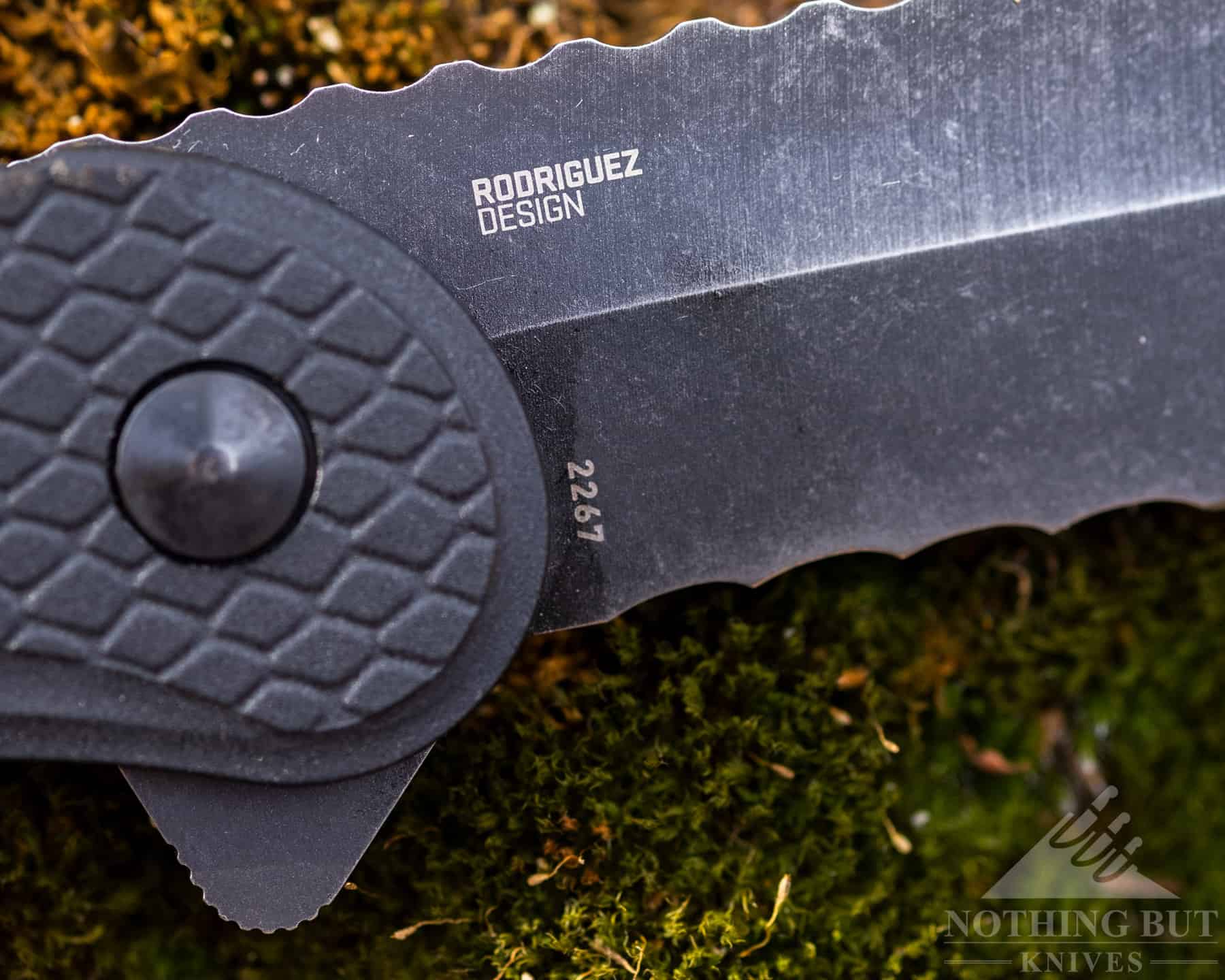
Snakes, it seems, love the leftovers of Taco Tuesday. The tenacious reptiles earned the nickname Taco Vipers, and—for a while—the name was adopted by Rodriguez’s unit. This new CRKT design is an homage to the memory of that time, and the troops with which Rodriguez served.
Specifications
| Blade Length: | 4.22” |
| Blade Materials: | 1.4116 stainless steel |
| Handle Materials: | Glass reinforced nylon |
| Lock & Operating Mechanism: | Assisted opening / liner lock |
| Weight: | 5.2 oz. |
| Closed Length: | 5.62” |
| Overall Length: | 9.84” |
| Blade Style: | Drop point blade with Veff serrations; |
| Blade Finish: | Stonewashed |
Pros:
| Exceptional size-to-weight ratio |
| The long, thin blade feels nimble in the hand |
| The backstory adds an additional element of interest |
Cons:
| The action isn’t as crisp as I’d like |
| Right-hand only configuration |
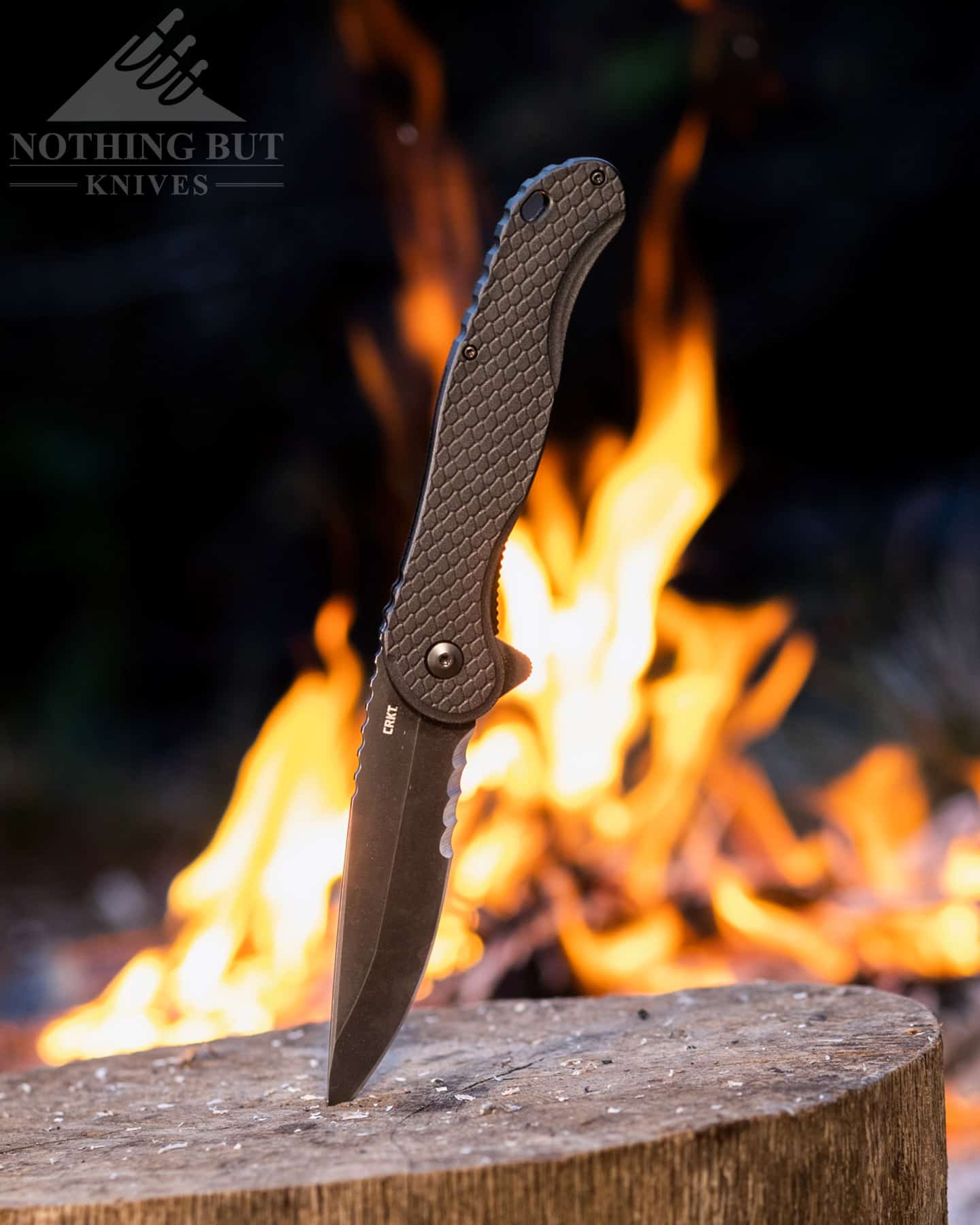
Snakes eat tacos? Who knew?
That’s part of the mission of this knife, oddly enough. Not the improvisational herpetological dietary lesson as much as the glimpse into a way of life you never knew existed. What is life in a war zone really like? Most of us will never know.
The Taco Viper is a reminder of the monotony and quest for normality that often define these liminal spaces that exist between home and the fight. And sometimes there are snakes there that might want to feed on the scraps.
The size
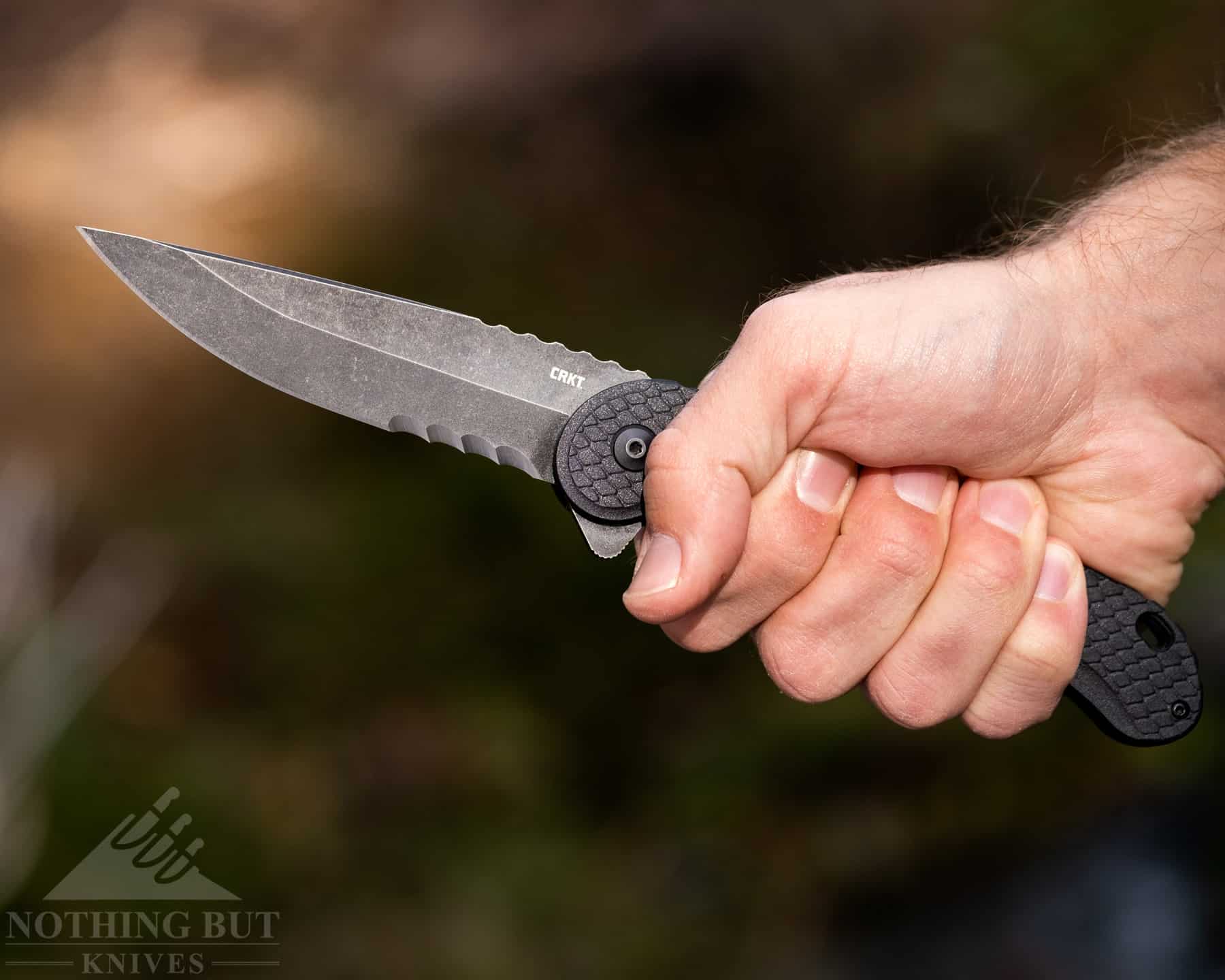
The Taco Viper is long. The blade measures 4.22 inches, but the cutting edge is longer than that. If I were better at math, I’m sure I could run the line that follows the short section of blade serrations and sweeps up to the tip.
This length is part of what makes this a solid choice for a defensive knife. That element is accentuated by a longer grip on the handle that allows the knife to be held in a variety of positions. Hold it close to the pivot to keep fine control over the cutting edge, or drop back on the handle to get a longer reach—that four inch blade, when held near the end of the handle, is significantly longer.
There’s even a viper-like swell to the belly of the handle that allows for a really aggressive grip in two distinct placements with the blade forward, and two with the blade reversed. This makes the most of the almost 10-inch length.
The weight
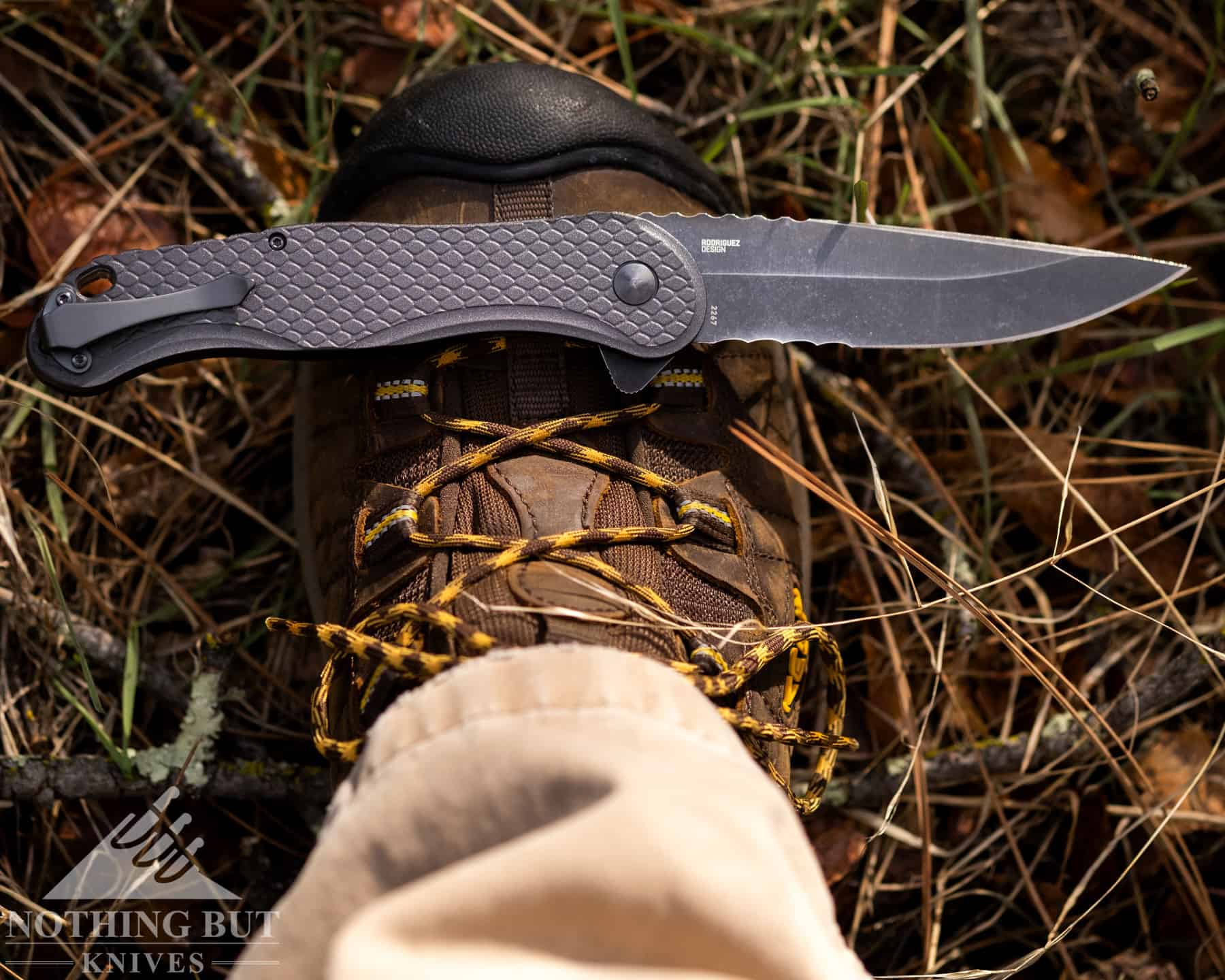
While the length makes this a heavier knife (that’s how physics works, I’m told), the Taco Viper is far from heavy. The handle itself is FRN over steel liners, and rather thin. The length of the blade is significant, but the width isn’t. In that respect, the Taco Viper is far more traditional.
Some big knives go for broke by adding width to the blade as well as dimensional thickness. There’s a solid reason for that. Once you begin heat treating, tempering, cryo-quenching steels, they can become brittle. Getting the cutting edge hard enough to hold a working edge while the spine remains flexible enough to take prying forces… that’s a craft that approaches artistry.
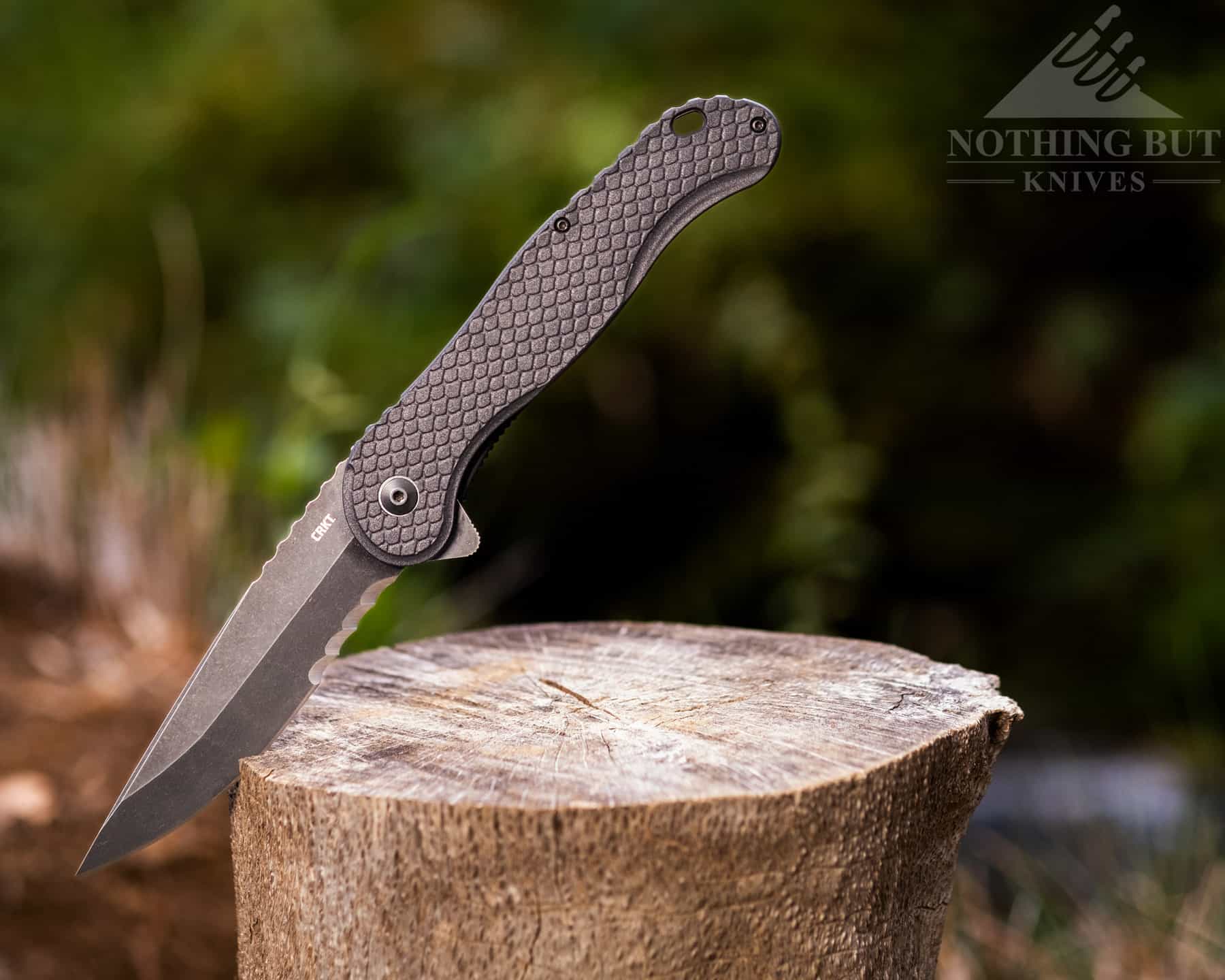
The longer the blade, the more this delicate balance matters. Many pocketknife makers keep their blades decently thick—at .18” or so—and shoot for a Rockwell rating around 60. If the blade is under 3.5” long, odds are the knife might fail at the pivot before the blade would break.
The Taco Viper could have easily built in bulk to make this design more robust. Instead, it goes the way of the snake—long and lean. This design has more in common with a stiletto than most contemporary big knife designs. And stilettos are never heavy.
The Taco Viper weighs in at 5.2 ounces.
The Action
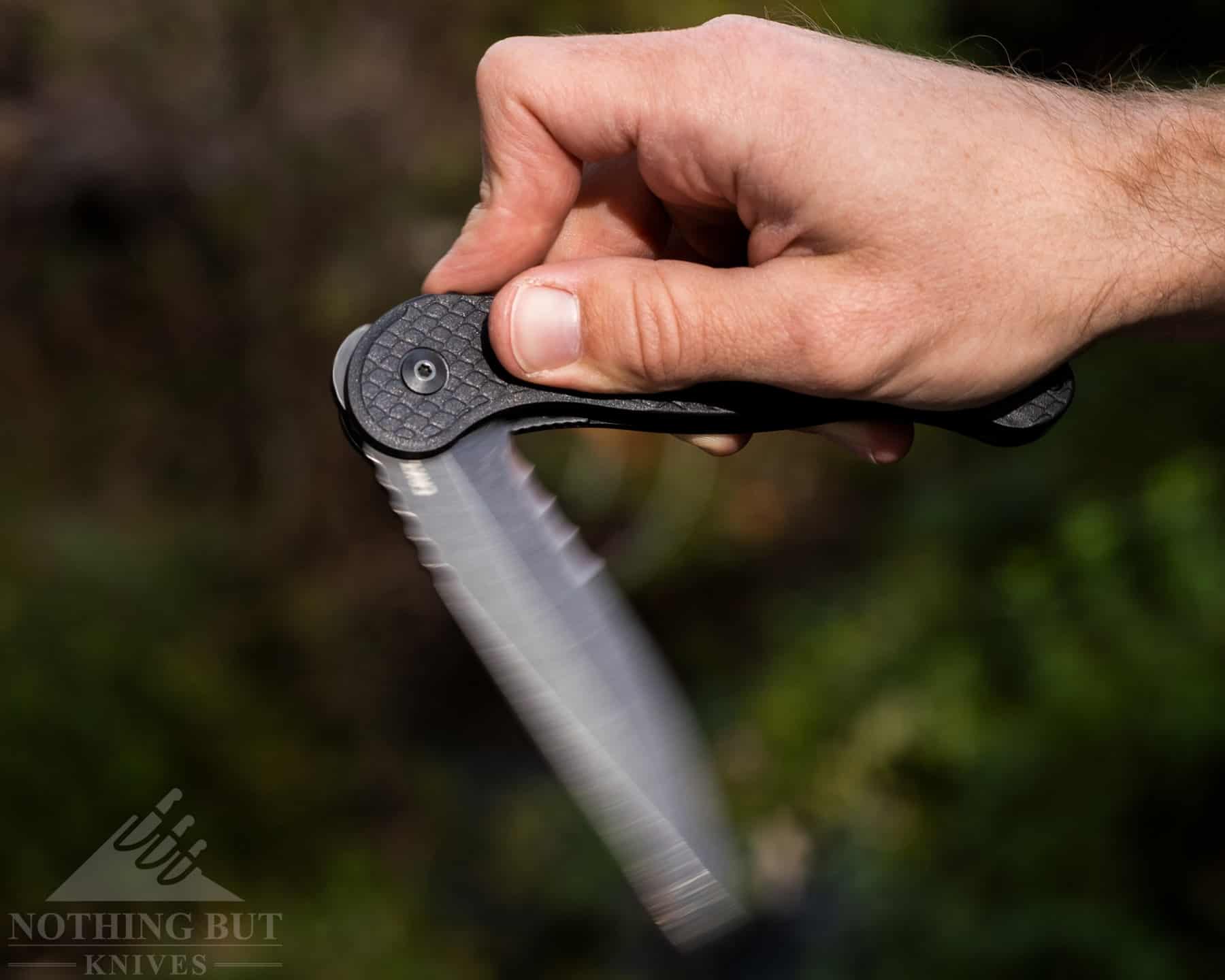
My son—15 and as much of a knife nut as I am—was convinced this is a flipper. The Taco Viper has a pronounced nubbin below the cutting edge that indeed acts as a flipper, but I am convinced this is an assisted opener. Why the confusion?
The spring tension isn’t as strong as it could be. I have some larger autos that will twist out of your hand if you’re not holding them down when you hit their buttons. This isn’t like that.
To me, it feels like CRKT has taken a spring that would really snap open a lighter knife and built it into a hybrid of sorts—an assisted opening flipper (albeit one that isn’t going to really snap, either way).
The Taco Viper’s Lock
Part of this comes from the lock design. As this is a liner lock, the blade has to travel over that liner tension on its way out. A bolt lock version would allow for less friction in the action and would speed it up, but the liner lock is reliable, easy to maintain, and—even with the tame opening movement—the combination works well.
While this isn’t a knife designed specifically for a military contract, the roots can’t be denied. This is a knife that will end up in the field. In this configuration, The CRKT is field serviceable. There’s nothing gimmicky in the build that would prevent it from being serviced in the field, if you had a good take-down tool and a place to corral all the fiddly screws.
The liner lock itself falls into place cleanly. The jimping allows for just enough clearance for a thumb sweep without having to dig down into the liners with a nail.
Carrying the Taco Viper
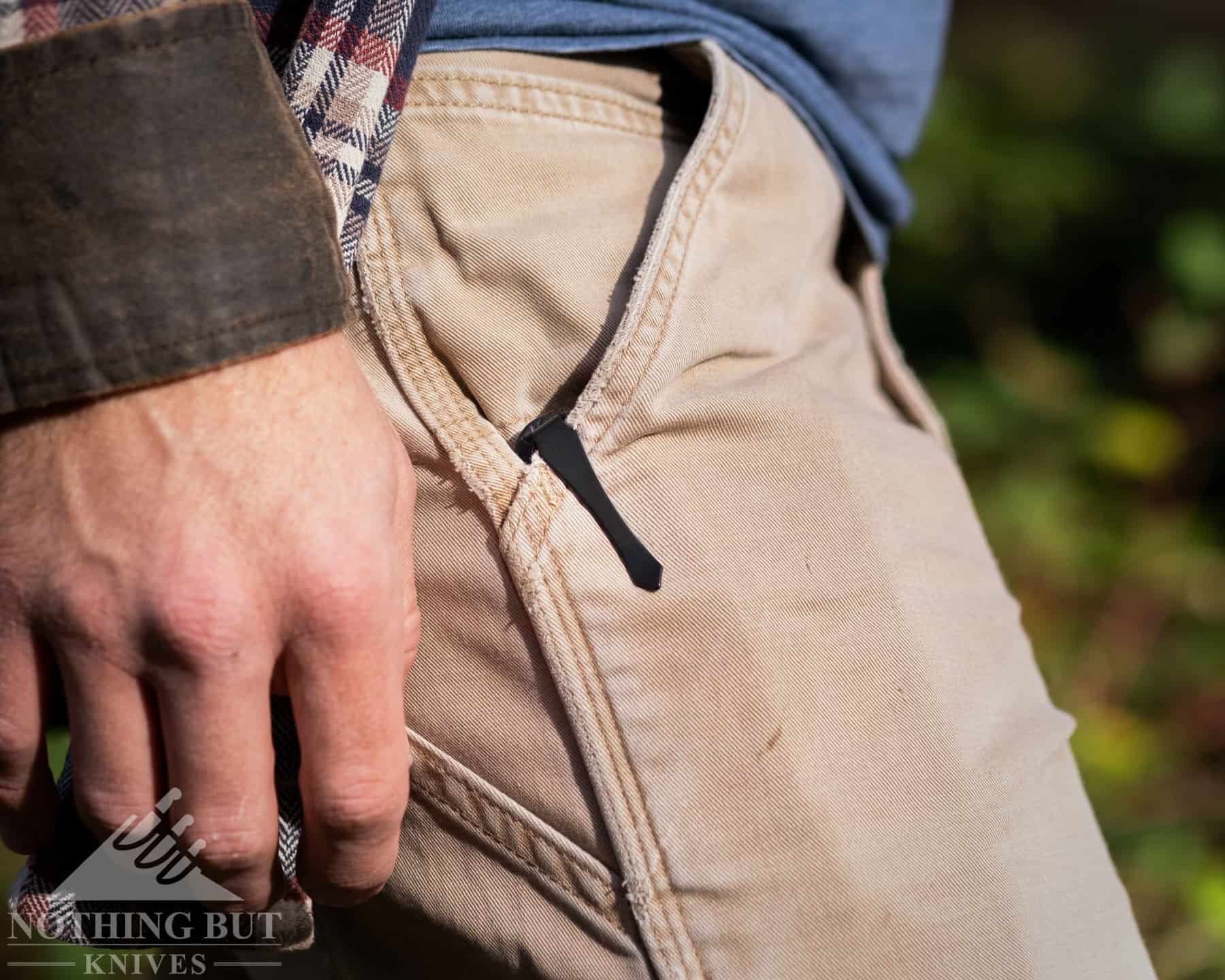
The closed knife is close to 5” long. That’s big for some folk. It contravenes some of my local municipality’s knife laws. But that’s another matter.
The CRKT, though, is pocket friendly. The clip itself is small (or maybe it seems smaller on a knife of this size). The clip orients the knife for tip up carry—and only for the right-hand pocket. The clip’s bow puts the knife deep in the pocket, and all-but out of view.
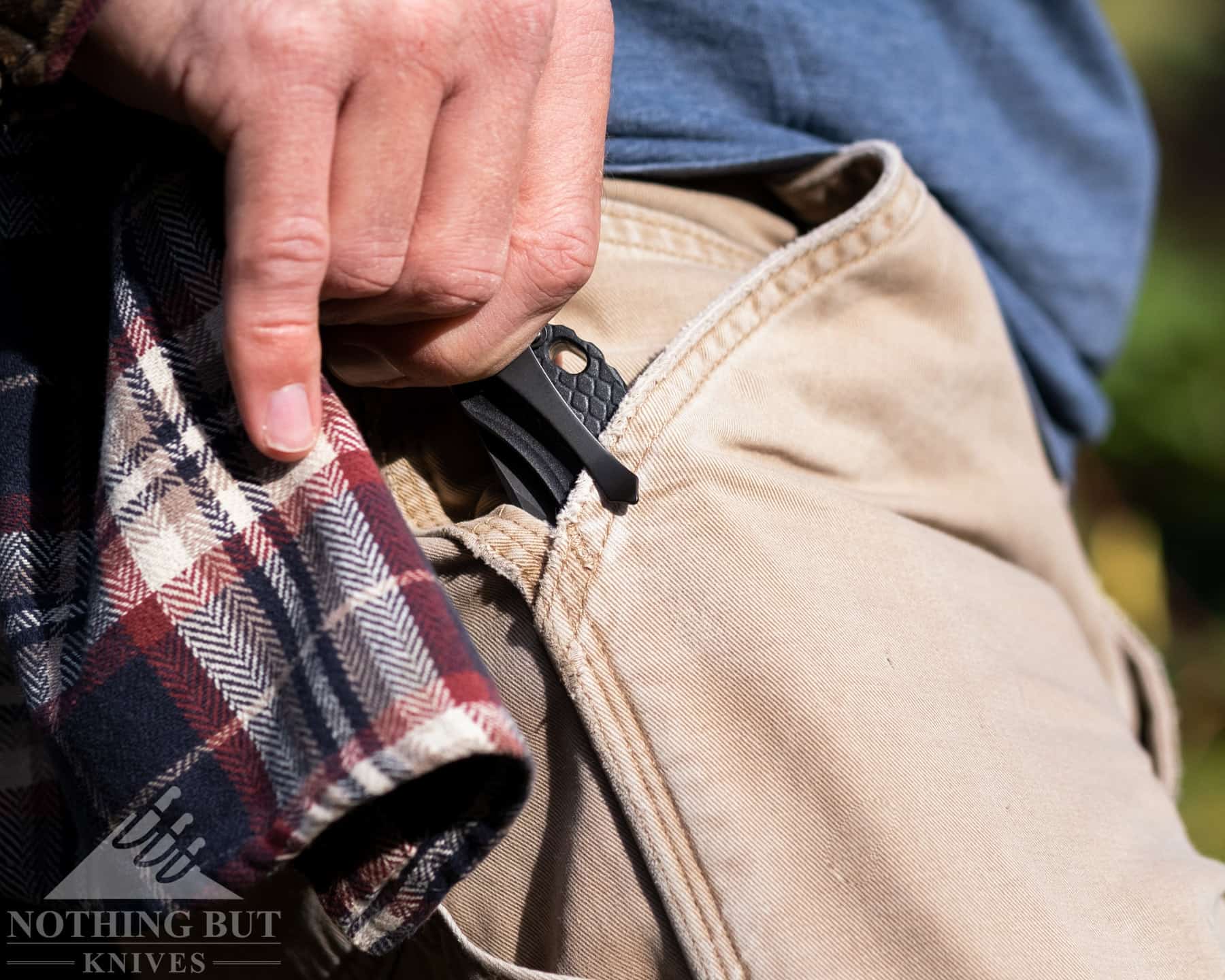
Where the long clip point falls in the handle there’s a small protrusion on one side, and jimping on the other. This is the texture you grab to pull from the pocket.
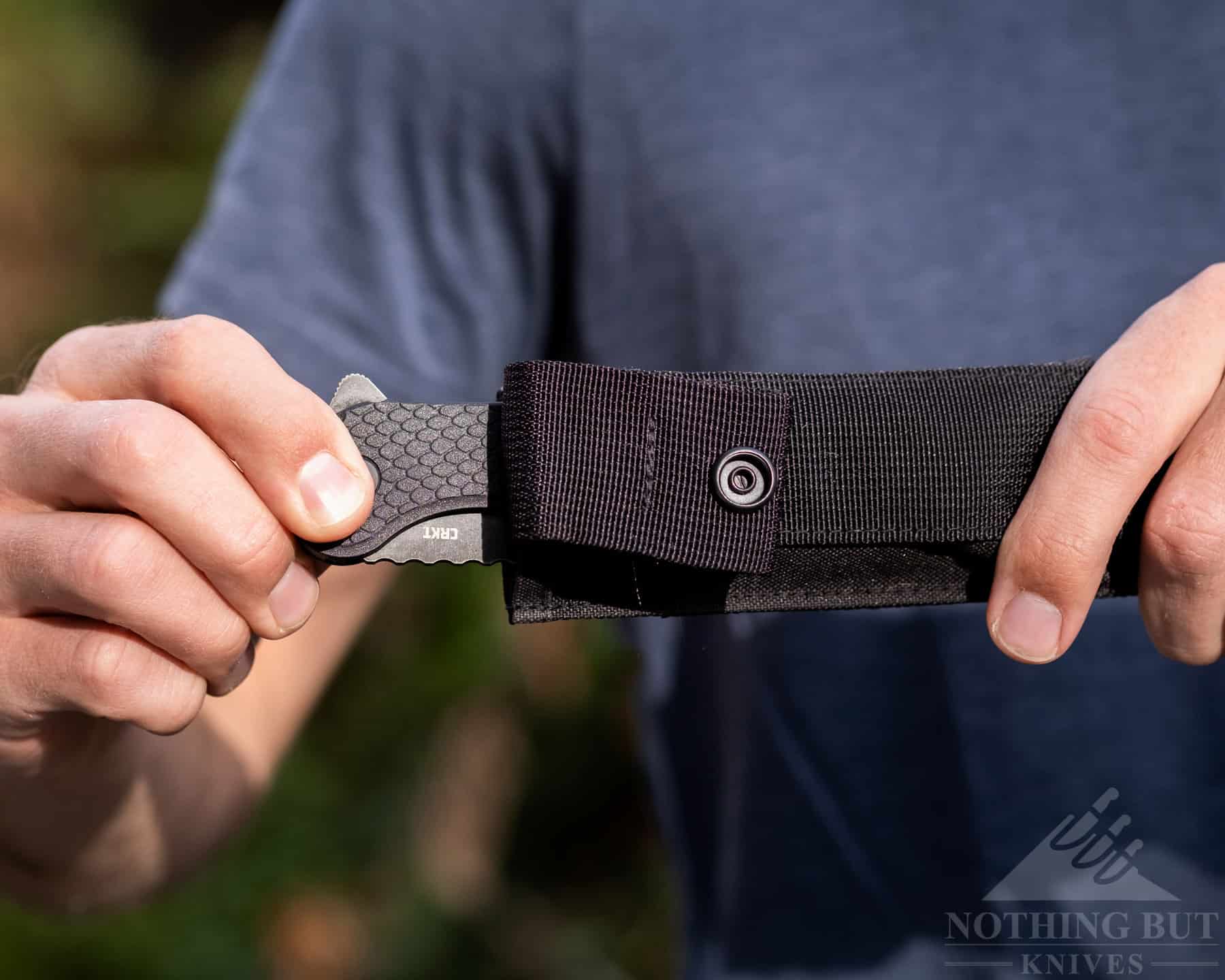
CRKT has made a MOLLE pouch for the Taco Viper, too—in black—for those who might want to wear the knife on a vest or on a pack. Attached to this, when I unboxed the knife, was a tether for those who might be carrying this under extreme conditions, like jumping out of perfectly functional aircraft. Between the pouch and traditional pocket carry, the Taco Viper is adaptable.
Using the Taco Viper
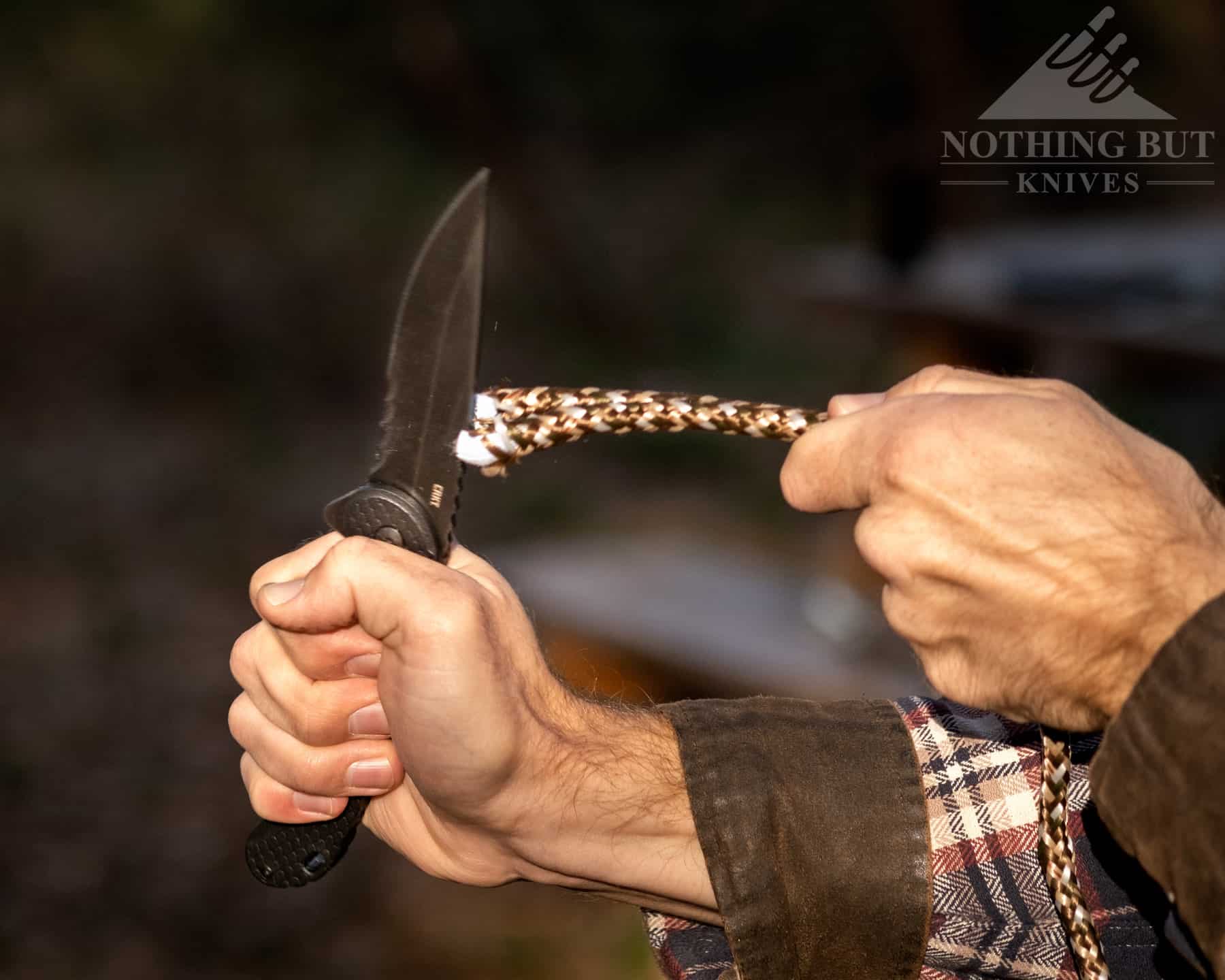
A pocket knife, in duty use, has to be a versatile tool. The blade may be used for obvious defensive purposes. It may be used to cut up a salami—or, as this one’s name implies, in the preparation of tacos. The blade needs to be cleaned easily and it has to stay sharp.
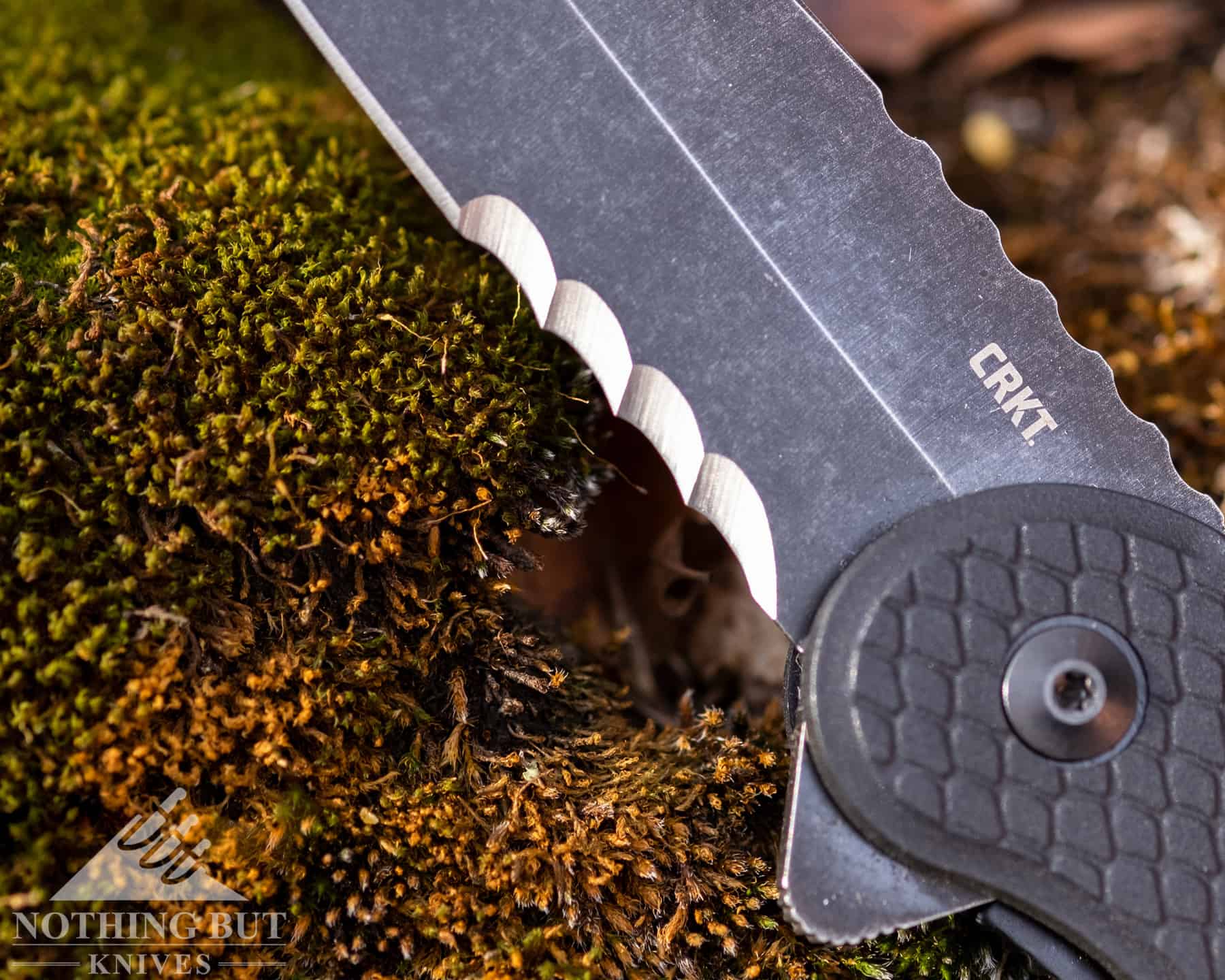
So far, the Taco Viper meets those needs perfectly. The Veff serrations cut exceptionally well. They eat up rope, another useful tool for a paratrooper. Yet the blade slices well, too, because of its length—like a paring knife.
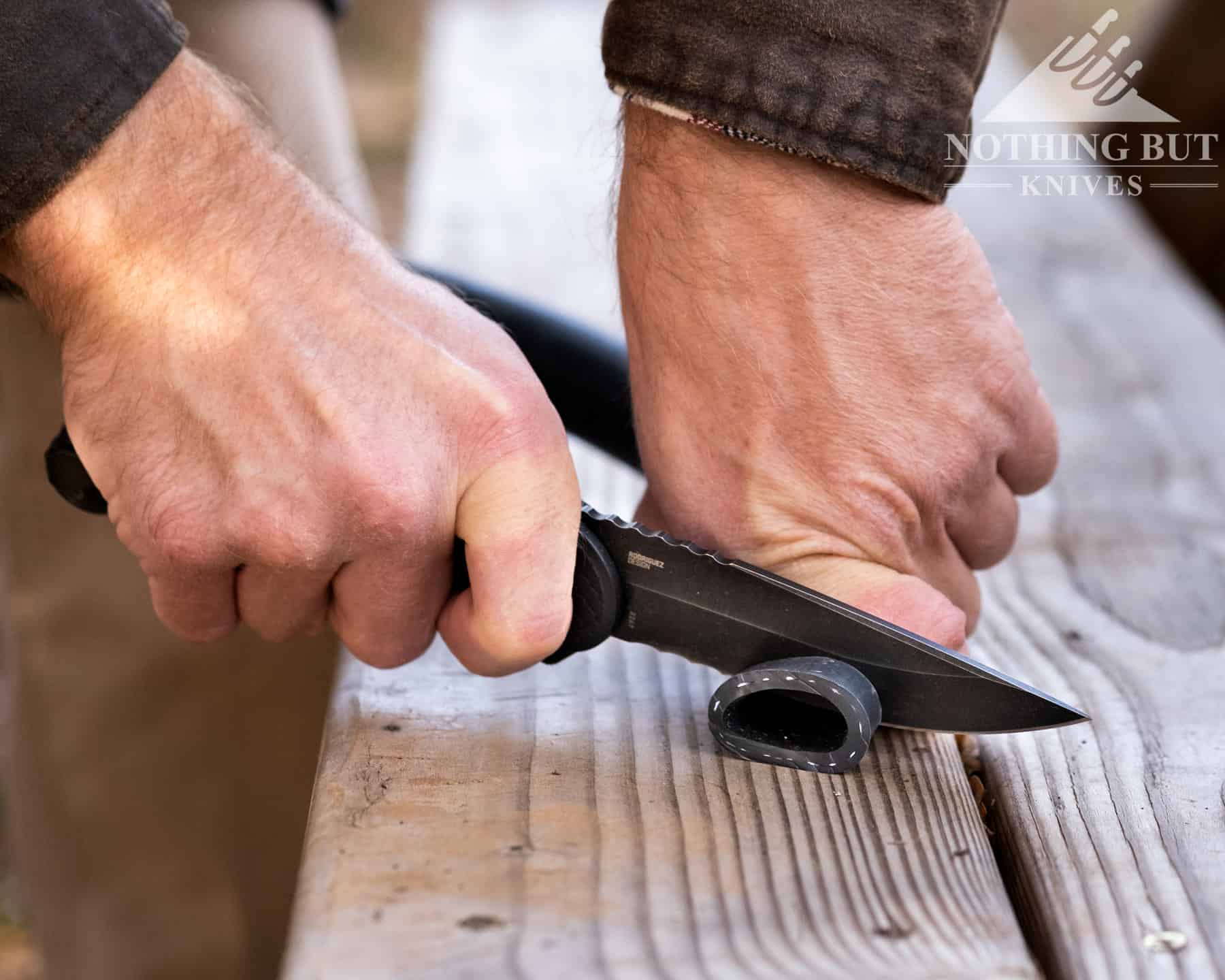
And 1.4116 stainless steel is a popular choice for kitchen knives, too. Because of its corrosion resistance and ease of maintenance, it can take the regular abuse of a kitchen (and of constant resharpening) and keep on going. For a knife built to go anywhere and do just about anything asked of it, it is a logical choice.
The MSRP on the Taco Viper is $135. CRKT’s Forged by War Program uses proceeds from the sale of these specific knives to support a charity of the designer’s choice, and Rodriguez chose the Global War on Terrorism Memorial Foundation—making this a solid knife that benefits a good cause.
The CRKT Taco Viper is a 2022 Drunken Hillbilly Award winner.
